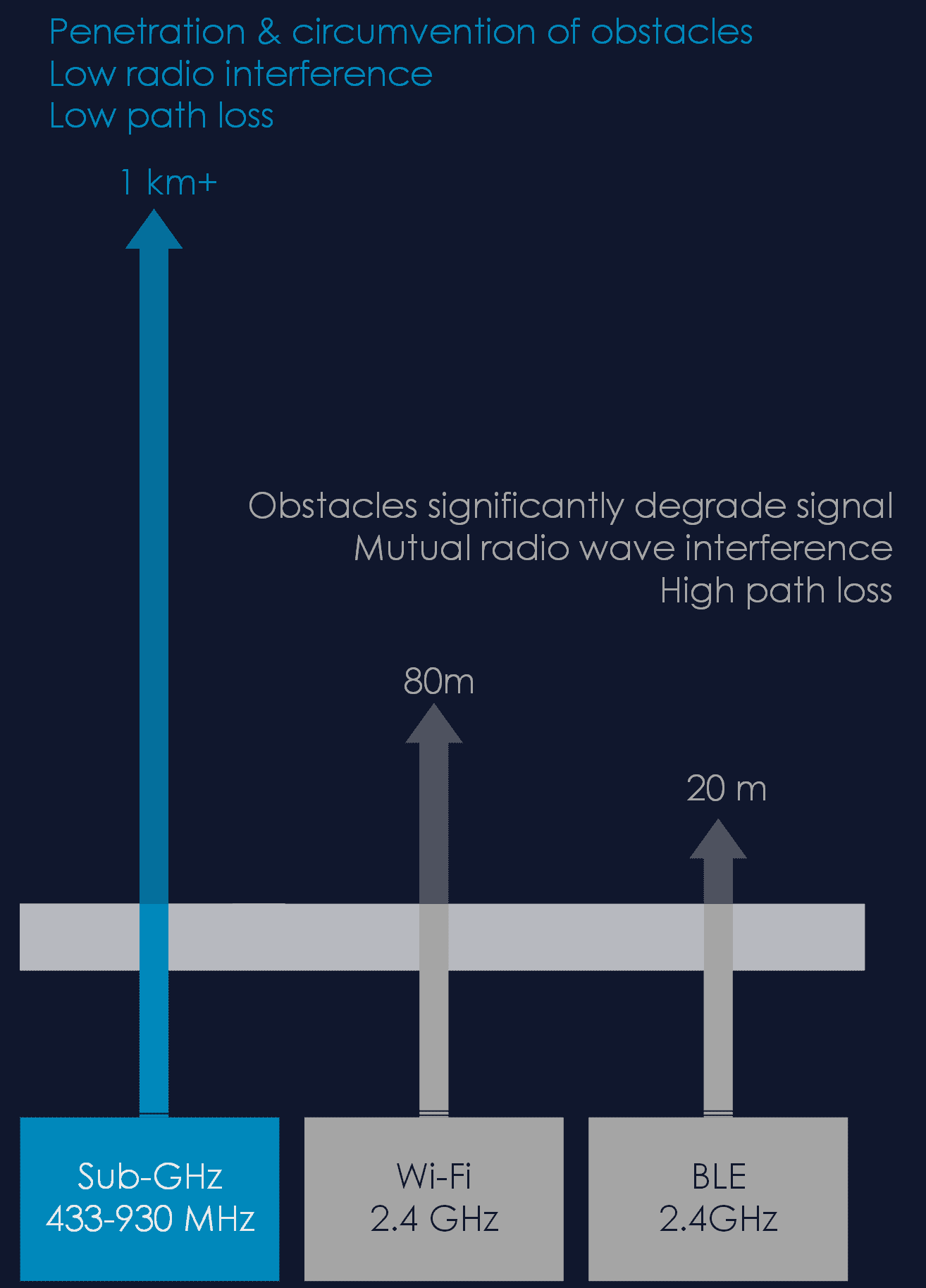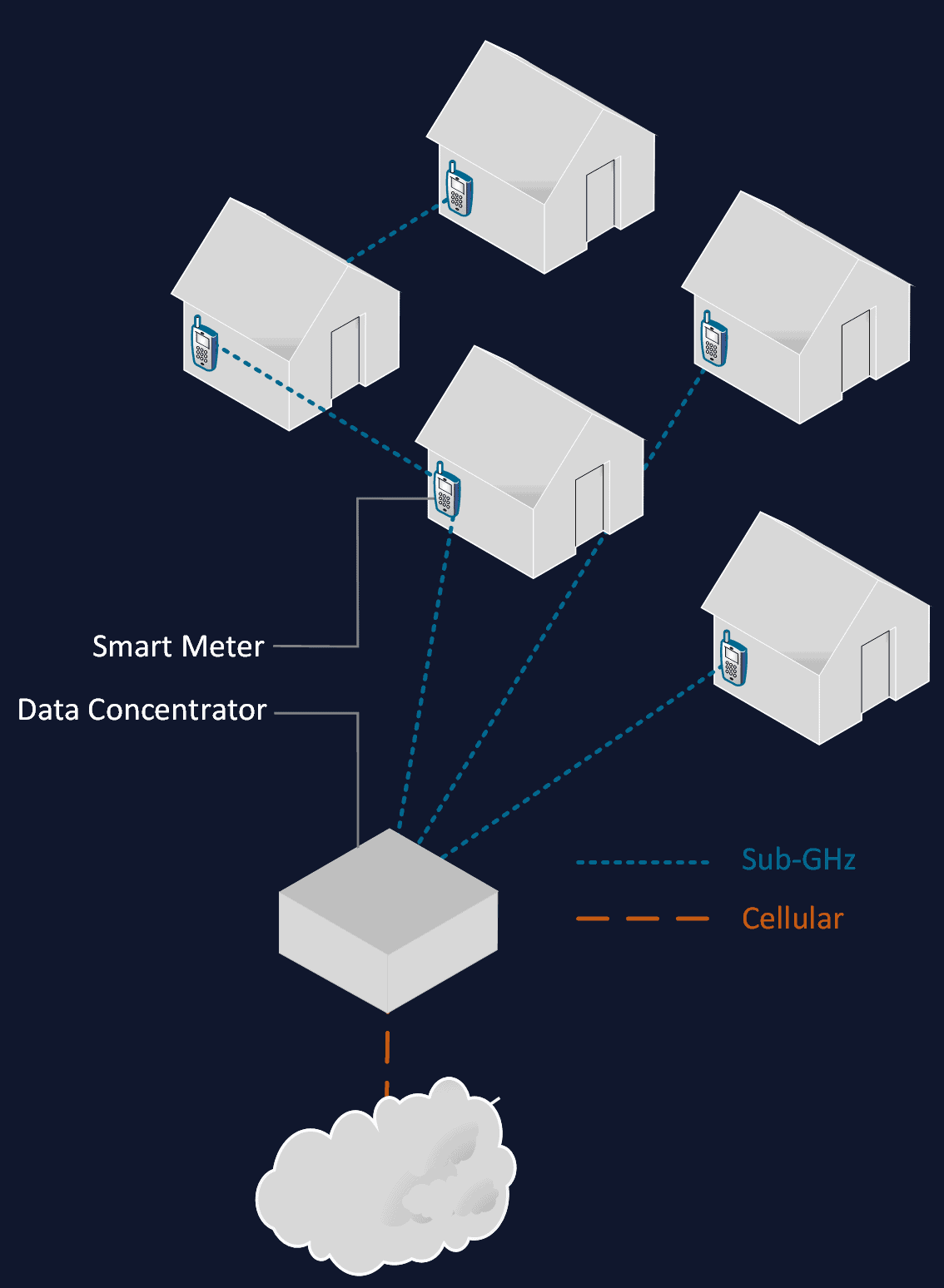A question debated in schoolyards for years: Who would win in a fight – Sub-GHz or 2.4 GHz? There is no clear winner: both technologies have their merit. Many products that use the 2.4 GHz band would benefit from operating at a lower frequency, such as the open ISM bands at 433, 868 or 915 MHz.
This blog post briefly discusses some of the advantages of the Sub-GHz band. Feel free to contact us to find out if your product can achieve a competitive advantage by utilizing the Sub-GHz band.
Physics & Benefits
A different radio frequency
Sub-GHz frequencies are inherently better suited for many applications where low data rates (less than 1–10 Mbps) are used. The advantages come directly from physical laws.
Long Range
Achieve Long Range (> 1 km) communication without relying on cellular technologies
Indoor Communication
Penetration of walls and ceilings allows reliable indoor communication without relying on tricks such as mesh networks and repeaters
Outdoor Communication
Less attenuation due to atmosphere, foliage and non-reliance on RF reflection results in reliable extreme long range outdoor communication
Better Battery life
Lower frequencies result in lower power consumption allowing longer battery life and/or a smaller battery


Smart Metering
Sub-GHz allows both indoor and outdoor communication over a large area. One example of an application that greatly benefits from Sub-GHz technology is smart metering.
- Reliable extreme long range point-to-point outdoor communication due to the following factors
- Low attenuation due to atmosphere, foliage and non-reliance on RF reflexes compared to higher frequencies
- Better diffraction properties, signal bends better at house corners
- Path loss is lower for lower frequencies
- Less congested band than 2.4 and 5 GHz
- Low duty cycle results in reduced disturbances
- Typical outdoor application: Smart Metering (power, gas, water)
- Each house in a neighbourhood has a smart meter with a Sub-GHz radio transceiver.
- Each meter communicates directly to a data concentrator
- Each data concentrator can handle a large area even if the meters are placed in suboptimal positions (e.g. basements).
ShortLink has more than 25 years of experience of developing electronics operating in the Sub-GHz band. Our experience includes discrete hardware design using commercially available circuits, antenna design, protocol design and custom RF ASIC design. We have a complete mixed signal Sub-GHz transceiver IP block allowing us to efficiently create a custom ASIC with integrated Sub-GHz communication.
Contact us to find out if your product can achieve a competitive advantage by utilizing the Sub-GHz band.





